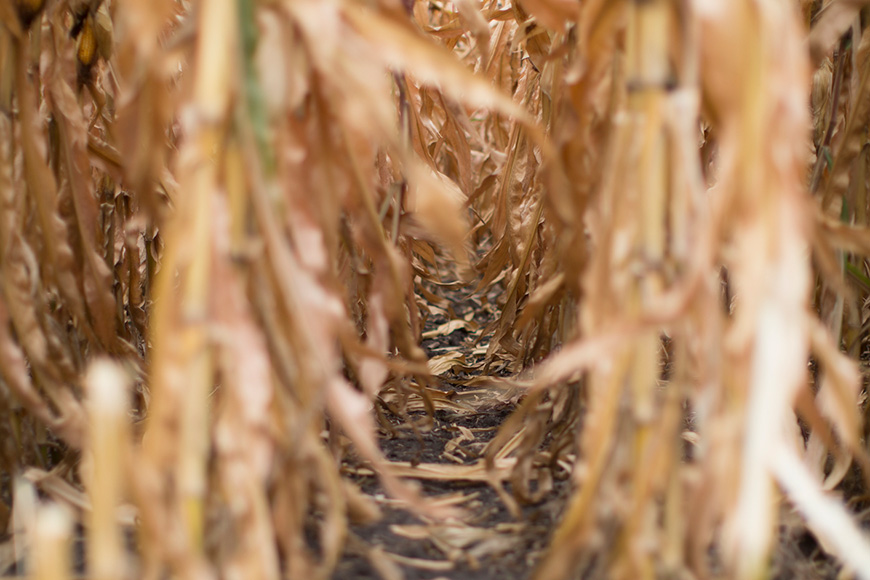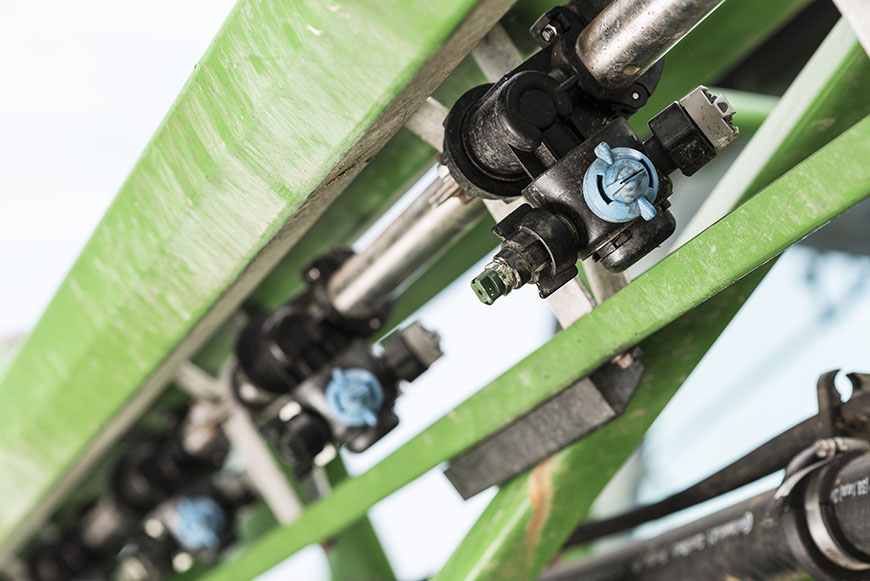Monitoring and Managing White Mold in Canola

It would be nice if we could just sit back and enjoy the view when canola reaches its most photogenic stage, but unfortunately, white mold can seriously impact your crop before it blooms when the conditions are right. Therefore, it’s crucial to monitor the conditions and prepare to manage against the disease if it appears.
If moderate temperatures in the 70s and wetness like rain, fog or heavy dews occur during bloom periods, the risk of disease increases. Although warmer temperatures decrease white mold development, warm/hot conditions don’t always mean white mold will dry up and no longer present an issue. The climate from the ground up to the flowers is the concern – not the air temperature.
I recommend using the Sclerotinia Risk in Canola Forecast Program website to track the progression of the disease during the growing season. A service of the Northern Canola Growers Association and North Dakota State University (NDSU), it monitors canola bloom stage and soil moisture levels to estimate disease risk.
Contact your local WinField® United retailer with questions about protecting your canola crop against white mold. Your trusted advisor can help you create a customized management plan for your acres.
All photos are either the property of WinField United or used with permission.
© 2022 WinField United. Important: Before use always read and follow label instructions. Crop performance is dependent on several factors many of which are beyond the control of WinField United, including without limitation, soil type, pest pressures, agronomic practices and weather conditions. Growers are encouraged to consider data from multiple locations, over multiple years and to be mindful of how such agronomic conditions could impact results. MasterLock and WinField are trademarks of WinField United. All other trademarks are the property of their respective owners.
Observe moisture and temperatures
Several environmental conditions need to exist for white mold (sclerotinia) to develop. Soil moisture before bloom is crucial because it’s the trigger for spore release. There’s a good chance for mold issues if 1-2 inches of rainfall occur in a 1-2 week period when canola plants start to bolt. A dense canopy will also retain moisture after those rains and provide the right environment for white mold development.If moderate temperatures in the 70s and wetness like rain, fog or heavy dews occur during bloom periods, the risk of disease increases. Although warmer temperatures decrease white mold development, warm/hot conditions don’t always mean white mold will dry up and no longer present an issue. The climate from the ground up to the flowers is the concern – not the air temperature.
I recommend using the Sclerotinia Risk in Canola Forecast Program website to track the progression of the disease during the growing season. A service of the Northern Canola Growers Association and North Dakota State University (NDSU), it monitors canola bloom stage and soil moisture levels to estimate disease risk.
Three fungicide application considerations
Fortunately, fungicides can help manage white mold better in canola than other susceptible crops. The right timing and application techniques can help reduce the disease’s impact on your crop:1. Optimal timing.
Most fungicides are labeled for application from 20-50% bloom with the most common recommendations in the 20-30% bloom period. These early applications are made to protect the flowers from becoming an infection point. Infected petals can fall onto leaves and leaf bases attached to the main stem, causing more white mold infection – the kind that reduces yield potential by killing the plant from that point up. Early infections are typically the worst as they have the most time to grow and spread as the season progresses.2. Bloom stage.
Pay close attention to the bloom stage as it can progress relatively slow or fast depending on soil moisture and, more importantly, air temperature. Under favorable conditions, a canola field’s bloom stage can change by 10% per day. Make the decision to spray before fields start to bloom to avoid delays during this critical developmental stage.3. Application techniques.
Most fungicides that protect against white mold are locally systemic, which means adequate coverage is required for effective disease control. The objective is to deliver active ingredients to as many flowers as possible and ensure the petals retain the droplets. The petals carry in pathogen to the lower canopy to infect stems. This makes proper droplet size essential. Here are some things to consider:- Use a nozzle, such as a flat fan XR, that delivers a medium spray droplet. Maintain operating pressures of 30-40 PSI with these spray tips. Nozzles that deliver coarse or very coarse droplets, such as air induction or other venturi tips, should not be used since fungicide will reach less surface area, and larger droplets may simply bounce off of intended targets.
- Water use rates of 10-15 gallons are best.
- Include MasterLock® adjuvant in your tank mix to spread droplets out over surfaces and reduce loss from bounce and evaporation. Improving coverage and retention will result in more active ingredient reaching the plant.
Contact your local WinField® United retailer with questions about protecting your canola crop against white mold. Your trusted advisor can help you create a customized management plan for your acres.
All photos are either the property of WinField United or used with permission.
© 2022 WinField United. Important: Before use always read and follow label instructions. Crop performance is dependent on several factors many of which are beyond the control of WinField United, including without limitation, soil type, pest pressures, agronomic practices and weather conditions. Growers are encouraged to consider data from multiple locations, over multiple years and to be mindful of how such agronomic conditions could impact results. MasterLock and WinField are trademarks of WinField United. All other trademarks are the property of their respective owners.





